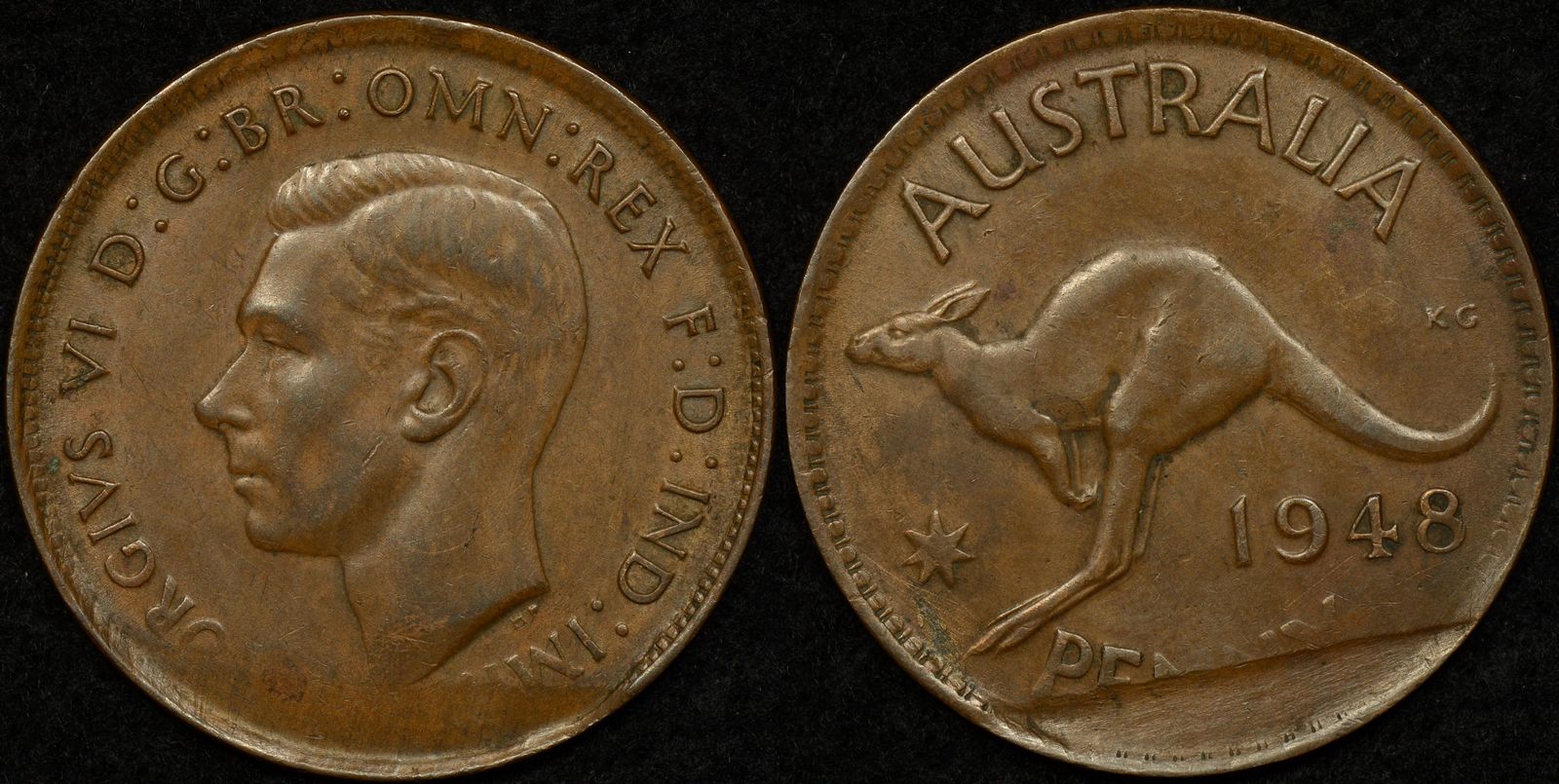As originally published in Australasian Coin and Banknote Magazine October 2021
What Went Wrong -error coins that escaped the Mint
Our showcased error coin this month is an error type that is a particular favourite of one of the authors. The coin in question is a Melbourne minted 1948 penny struck on an underweight 9.06 gram planchet (normal penny weight is 9.45 grams). A good part of the design of the coin is missing towards the bottom on both sides of the coin. The surface of the area of missing design is smooth on the obverse, while on the reverse it is rough with largely parallel striations going from left to right.
Why are the surfaces of both sides different? To answer that it’s best to think about the process that makes the metal strip from which the penny blanks were punched. The metal strip began as a thick heavy ingot of bronze. It was heated up and run back and forth through a series of hot roller mills with ever decreasing separation that gradually thinned out the large ingot into a flat metal strip. During this process perhaps a cooler scrap of metal falls onto the metal strip and is pressed into the surface by the rollers. It too is rolled flat and elongated but because of the difference in temperature between the scrap and the strip of metal it doesn’t actually bond with the strip.
Once complete the bronze strip is coiled and then later used to manufacture penny blanks. Perhaps at this time our bit of elongated rolled in scrap falls off of the strip and a light weight blank is punched. Alternatively, perhaps the blank is punched with our scrap in place and the punched part of scrap falls away later. We cannot be sure when the scrap fell out but we do know for certain it fell out BEFORE the coin was struck. We can be 100% sure that the scrap was on the reverse of the coin due to the parallel striations. Why then is the design missing on the obverse? Because when it was struck the planchet was too thin in that area for metal to fill the die properly.
We’ve seen several errors of this exact type over the years, few enough to make them scarce. They are an interesting item to add to one’s collection and provide a real insight into two separate processes used to manufacture coins. If you happen to see one make sure you snap it up!
Mark Nemtsas and Kathryn Harris own and run The Purple Penny coin shop in Adelaide coin shop in Adelaide and are passionate about error coins.


